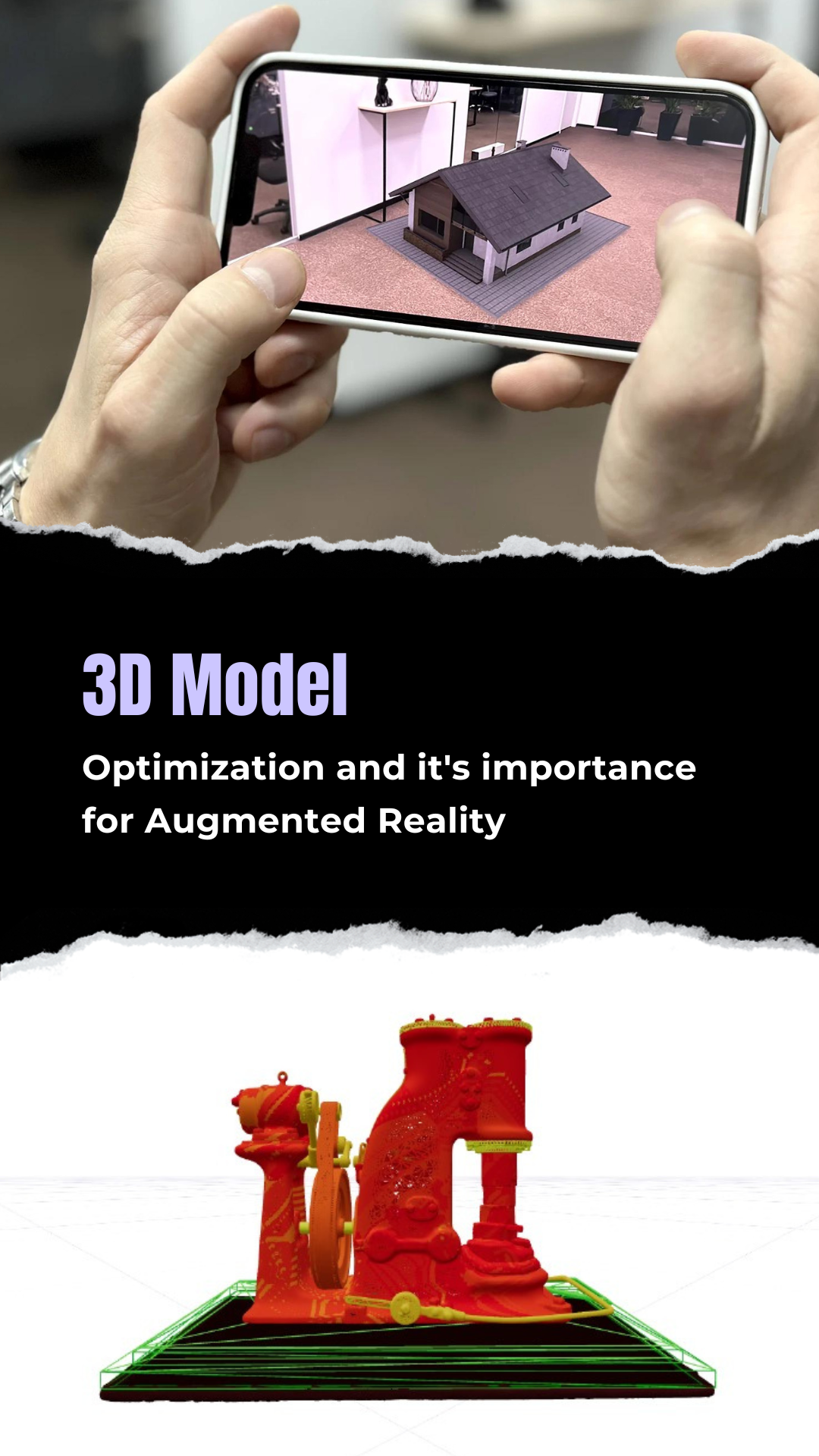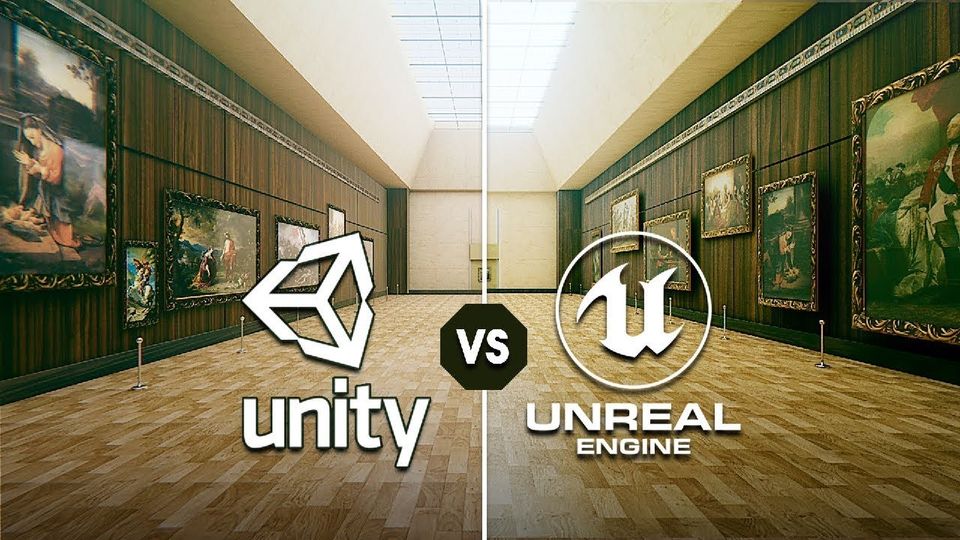What is Real-time 3D?
Understand the difference between Pre-rendering and real-time rendering, learn about applications of real-time 3D and its implementation in various industries.

There are many beliefs associated with the creation of this world – our environment, ecosystem including complex human beings like us and the beauty consorted with every creature.
Real-time 3D is one of the various technologies which helps us create and explore real-time 3D images.
In reality, the process of converting 2D images into 3D and processing it in a virtual environment is quite complicated. After a series of research and innovation, two types of 3D rendering technologies were developed - Pre-rendering and real-time rendering.
- Pre-rendering means a process where 3D images are created and processed in such a manner that there is no scope for real-time interaction and diversification.
- Real-time 3D means a process where images are created instantly i.e. 24 frames each second which is a minimum requirement of the human eye to acknowledge such instant movements. Real-time 3D solves the drawback that pre-rendering of 3D images causes, as it provides real-time interaction of users, assuring great quality of user experience and a high degree of photorealism.

You can also create a real-time three-dimensional world of yours. Developers use this technology to their advantage and create an incredible virtual world that is fully interactive like our real world within seconds. The effects, models, and environment created today will be our future tomorrow with tremendous advancement.
Let's get into the technicalities of Real-Time 3D -
Real-time 3D is a system where one can create a virtual world which consists of three-dimensional characters and an environment. It is a system of graphics which helps in optimizing and synthesizing three-dimensional images.
To be precise, real-time 3D is both immersive and interactive. It is immersive because real-time 3D rendering facilitates the virtual representation of the real world. The look and feel of real-time 3D provide originality.
Due to the authenticity of real-time 3D rendering of images, the attribute of interaction is attached to it.
Application of Real-time 3D in the real world –
Initially, triangles were combined to form a figure. Triangles were used because 3 points in a particular space gave a two-dimensional look. The solid figures were bought into the picture and they seemed to look even better.
Then image data was inserted in those figures to bring in texture. Then lights with the concept of brightness and darkness took place. This eventually gave birth to pre-rendering technology which further flashed lights in Real-time 3D.
Real-time 3D was originally adopted by gamers and developers. Seeing the craze of people using such applications, industrialists started thinking if the same technology could be of some use in their respective fields. It indeed did. Brainstorming ideas, problems and solutions led to the incorporation of real-time 3D tech in various industries.
Along with developers and the gaming sector who employ this technology, there are numerous industries where it is significantly used such as –
- Architecture – Earlier, architectural designs were made on paper. Every single change was made on those papers repeatedly which reduced its quality. Today in the 21st Century, we have architectural rendering which helps the designer make changes instantly and add quality to it. Not to ignore, various colours can also be added to compare and see which design looks more appealing.
- Marketing – This industry is constantly developing and evolving, which enhances and accommodates real-time 3D for creating viral and engaging content. This will help in increasing brand awareness and the engagement rate of the community.
The brands can use this technology to show off their products and services which keeps their potential consumers engrossed.
Example: Samsung, used 3D visualization to show off their brand new Galaxy Tab A Tablet.
(Source: https://www.animech.com/en/articles/3d-marketing-and-3d-advertising)
- Engineering – Engineers leverage their maximum potential with this technology as it helps in the fantastic representation of designs. It identifies the errors easily which gives them an insight to solve the issue in real time. This further helps in saving a lot of time and money along with the flexibility to change the design as and when required.
- Healthcare – The most critical industry which uses Real-time 3D for detailed surgeries to avoid any panic situations at the time of operation. It helps doctors understand the anatomy of their patients in a detailed manner which further reduces risks. It facilitates the diagnosis, aiding and recovery of patients.
- Conveyance and navigation – This technology has been incorporated to make wise decisions while travelling. It locates blind spots, information about lane departures, sensors and other different warnings to ensure the safety of passengers and drivers. It further facilitates the navigation of autonomous vehicles. Be noted, that Google is also working on incorporating real-time 3D maps by collaborating with various other mapping companies.
- Defence and Training – The Ministry of Defense enhances the process of their regulation by using real-time 3D in different spheres. The training of military personnel is far more advanced as it helps them understand and deal with real-time situations by avoiding mistakes. This technology is employed in different matters with which the government deals to ensure high public service with utmost diligence.
- Manufacturing – The world is getting advanced mainly because people are now willing to give their creative ideas an actual shot. Real-time 3D helps young minds make a virtual prototype of their products and conduct different tests to know what works and what doesn’t. This saves inventory costs and wastage of human resources.
There are 2 major steps involved in manufacturing where Real-time 3D tech is used:
Robotic simulation - A process where a virtual model of the product is created, tested and trained for its production in the real world.
Synthetic data - Creation of appropriate images for training the prototype.
8. Entertainment – Who isn’t aware of movies like Avatar? Real-time 3D has maximum usage in the entertainment industry as well. Different effects, visuals and drama keep us
entertained. Humans get bored easily, real-time 3D is what keeps us engrossed. The engagement rate in the entertainment industry is high with the help of real-time 3D tech because -
- It produces instant virtual images. With the reduction in the attention span of the individuals, faster hooks and high-quality 3D rendering help a lot.
- 'Storytelling' and 'step-by-step process' content works the most. Do you know why? Because humans love to know what happens next. We are always curious. So, 3D rendering of images in real time helps us meet the expectations of our target audience by building up curiosity.
This list is not exhaustive as Real-time 3D is significantly used in numerous other industries as well.
Now is the time to discuss the High-end cases where real-time 3D is used –
- Ariana Grande’s concert in 2021 within the Fortnite gaming, shows how far Real-time 3D will go. 'The Rift tour', a virtual concert by Ariana Grande was held on the 'Fortnite Battle Royale' video game. This show was played 5 times between 6th August 2021 and 8th August 2021. It truly was a stepping stone to new realities.
- During the pandemic, almost every educational institution shifted to online learning. Teachers made use of real-time 3D for different chapters to make the classes interactive and comprehensive.
- Meetings were conducted online which gave flexibility and comfort to employees. This comfort zone is now used as an opportunity by sophisticated tech companies like Meta to develop virtual meetings using real-time 3D for better conceptual framework and innovation.
- Hyundai Motor Company launched Hyundai Mobility Adventure to provide people with an experience of how Metaverse looks and obtain feedback.
Hyundai Mobility Adventure was launched on Roblox where consumers can choose their Avatars and travel across 5 different virtual spaces namely-
- Festival Square
- Future Mobility City
- Eco-Forest
- Racing Park
- Smart Tech Campus
There are highly developed Metaverse systems according to the current growth rate of technology in the world with a lot of potential to grow better and stronger with each passing day.
The Metaverse industry is expected to grow by a CAGR of 47.2% from 2022 to 2027 (Source: https://www.marketsandmarkets.com).
If you are an enthusiast in the field of technology, creativity and Metaverse or a person who’s uncertain about your career choices, Real-time 3D exists for you.
Know that you have immense potential to learn the art of Real-time 3D for enormous growth.
If you are a brave entrepreneur, who doesn’t know how to stand out and scale their business, then leverage this opportunity to your advantage and launch your business using Real-time 3D





